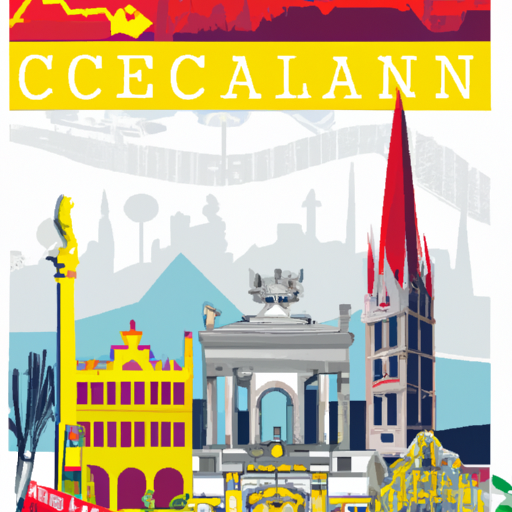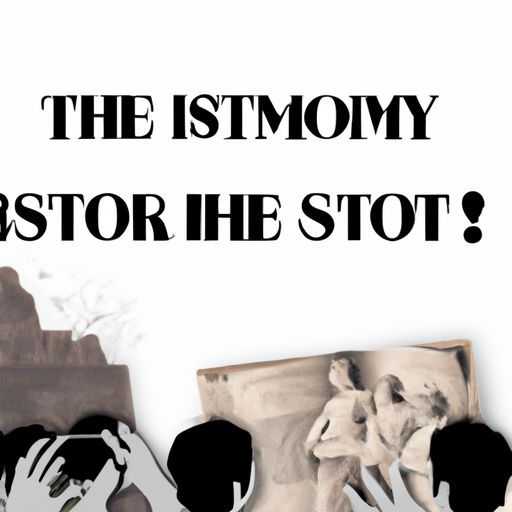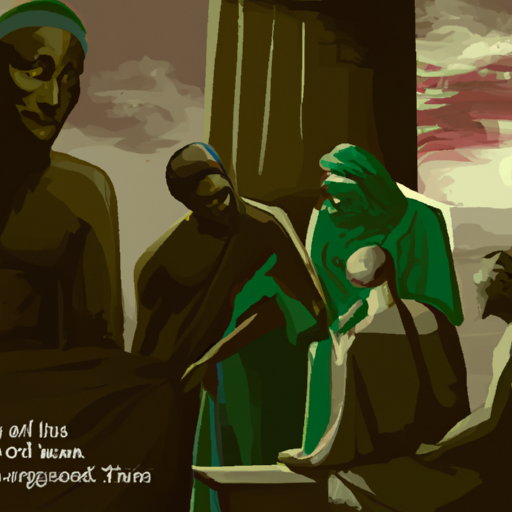The History of Viking Expansion: Exploring the Countries Visited by the Vikings
Unearth the secrets of a bygone era! Delve into the annals of time to uncover the mysteries of the Vikings and their far-reaching explorations. Unravel which lands these seafaring warriors traversed, and what legacies they left behind. An exciting journey awaits – step back in time and explore!

Vikings, seafaring warriors of yore, have long been the subject of fascination. With stories of their far-reaching travels, a curiosity has been sparked to uncover the secrets of this forgotten age. A voyage through time awaits – unearth mysteries and trace the paths of these ancient adventurers! Explore the legacies they left behind and uncover the history of Viking exploration. An exciting journey awaits!
.
Introduction

A people of the sea, Norse seafarers from Scandinavia left an unforgettable impact on European history in their 8th-11th century exploration and raids. The Vikings’ reach extended far and wide, with their presence felt in Norway, Denmark, Sweden, Finland, Iceland, England, Scotland, Ireland, France, Germany, Russia and beyond.
– History of Viking Raids in Europe
For centuries, tales of the Vikings’ raids in Europe have been told. In the 8th and 9th centuries, Norsemen from Scandinavia ventured out to explore and pillage other lands. The destruction they caused was immense, as they plundered villages for wealth and resources and took slaves back to their homeland.
The first documented Viking raid happened in 793 AD when a group of Norsemen attacked Lindisfarne Monastery in England. This event marked the beginning of a period of intensified activity by Viking raiders throughout Europe, including England, Ireland, Scotland, France, Germany, Spain, Italy and even Constantinople.
Vikings were known for their brutal tactics when conducting raids. Their longships enabled them to quickly reach unsuspecting coastal towns and villages where they would plunder food supplies or valuable items such as jewelry or weapons. They even captured people to be sold into slavery in Scandinavia.
The effects of these raids were felt across Europe during this time period. Many settlements were destroyed or abandoned due to fear of further attacks from the Vikings. To protect themselves from these invasions, various European powers began building fortifications along their coastlines.
It wasn’t until the 11th century that Viking raids started to diminish due to increased military resistance from European forces as well as changes within Scandinavian society which directed many Norsemen away from raiding foreign lands towards more settled lifestyles closer to home.
Today we can look back at this era with both admiration and dread at the strength wielded by these seafaring warriors whose legacy still lives on through stories and artifacts left behind by their conquests.
– Historical Impact of the Vikings on Different Countries
A mysterious force from the past, the Vikings have left a remarkable imprint on history. From their raids and explorations of Europe to their settlements in North America, their influence is pervasive. In England, their invasions began in 793 AD with an attack on Lindisfarne monastery. Over the next century, they established multiple kingdoms and trading posts along the coast that can still be seen today in place names and surnames across England.
In France, the Viking raids were not as successful as those in England; however, they did create some colonies along the Seine River during the 9th century. These settlements eventually blended into French culture yet remnants of Norse heritage are still present with place names such as Rouen and Normandy.
The Vikings also played a vital role in developing trade routes between Scandinavia and Constantinople which led to them founding cities including Novgorod and Kiev – both becoming major hubs for commerce and learning. Even now, traces of these Viking settlers can be found throughout Russia with many place names derived from Old Norse words like “Vladimir” (from vik-lauðr meaning “rule by law”).
It is thought that around 1000AD, the Vikings were among the first Europeans to reach North America where they built a settlement on Newfoundland which lasted until 1300AD when it was abandoned due to climate change or conflict with indigenous peoples. Despite its brief lifespan, this settlement had a lasting impact on North American history with archaeological evidence suggesting that it was one of the earliest known European colonies on the continent.
The legacy of these seafaring warriors continues to reverberate throughout Europe and beyond – from language to place names to cultural influences – making them one of history’s most influential cultures.
– Archaeological Evidence of Viking Settlements Across Europe
Awe-inspiring archaeological discoveries across Europe have uncovered remnants of the Viking people’s past. From England to France and Russia, artifacts such as swords, tools, jewelry, and pottery have been unearthed that shed light on the lives of these seafaring warriors. Additionally, longhouses, burial grounds, and trading centers have also been discovered that hint at the presence of Viking settlements. Through further examination of these sites, historians can begin to unravel how these ancient cultures interacted with each other and ultimately impacted European history.
– The Legacy of the Vikings in Modern European Culture
The legacy of the Vikings is one that remains perplexing and bursting with intrigue in modern European culture. From the landscapes to the languages spoken today, their pervasive influence is undeniable. During their time, the Vikings were a powerful force whose raids, conquests, and trading networks left an indelible mark on the continent. The Viking Age, beginning around 793 AD and lasting until 1066 AD, saw them establish settlements throughout Europe and venture further afield to explore new lands and trade with other cultures.
One of their most significant legacies is Old Norse – the language shared by many countries in Northern Europe which evolved into modern Scandinavian languages such as Swedish, Danish and Norwegian. It also had an impact on English and other Germanic languages still spoken today. The Vikings’ shipbuilding skills enabled them to travel great distances and colonize new lands; they developed longships which were fast and agile vessels capable of carrying large numbers of people or cargo across seas or rivers – laying the foundation for much of European maritime exploration during later centuries.
Their cultural heritage is still visible today in many parts of Europe – from sagas passed down through books and films such as The Lord Of The Rings trilogy which draw heavily on Norse mythology for inspiration to artifacts such as jewelry, weapons, coins found at archaeological sites across Scandinavia and beyond. This enduring legacy continues to shape modern European culture even now – from language to shipbuilding technology to cultural traditions – making them an integral part of our collective history that should not be forgotten or overlooked.
– The Spread of Viking Influence Through Trade and Exploration
The enigmatic reach of the Vikings was far-reaching, extending beyond the boundaries of Scandinavia. Their trading prowess and exploratory spirit enabled them to leave an indelible mark on Europe and beyond. Through their trading activities, they acquired wealth by selling items such as furs, amber, walrus ivory, and swords which were highly sought after in other parts of Europe. Additionally, they explored new lands to colonise; in 874 AD they established a settlement in Iceland, followed by Greenland in 985 AD and Newfoundland in 1000 AD.
Today, remnants of Viking influence can be seen through their language, culture and art. Many modern-day words used in English are derived from Old Norse words such as ‘husband’ and ‘law’. Their culture has been preserved through literature such as sagas and eddas which tell stories of heroes and gods from Norse mythology. Furthermore, Viking art can be seen through artefacts such as jewellery or carved wooden objects that have been discovered at archaeological sites around Europe.
It is evident that the spread of Viking influence was largely due to their skillful trading activities and exploratory spirit which enabled them to reach far-flung places across the globe. The legacy they left behind will remain a part of history forever.
conclusion

In a time of tumult and uncertainty, the Vikings emerged from their Scandinavian homeland to leave an indelible mark on the world. Their exploits were far-reaching; they invaded, settled, and left their mark on territories stretching from Britain and Ireland to Russia, Greenland, Iceland, France, Italy, Spain, and even North Africa. An era of exploration and conquest that spanned 800-1100 AD will never be forgotten.
.
Some questions with answers
Q1. Which countries were Vikings from?
A1. The Vikings originated from Scandinavia, which includes modern-day Denmark, Norway, and Sweden.
Q2. When did the Viking Age take place?
A2. The Viking Age took place between 793 and 1066 AD.
Q3. What areas did the Vikings explore?
A3. The Vikings explored a large area of Europe, including parts of England, Ireland, France, Germany, Russia and even North Africa.
Q4. How did the Vikings travel?
A4. The Vikings travelled by sea in longships which allowed them to cover great distances quickly.
Q5. What impact did the Vikings have on history?
A5.The Vikings had a significant impact on European history as they introduced new trading practices, technologies and religious beliefs to many regions they explored or settled in during the Viking Age.





